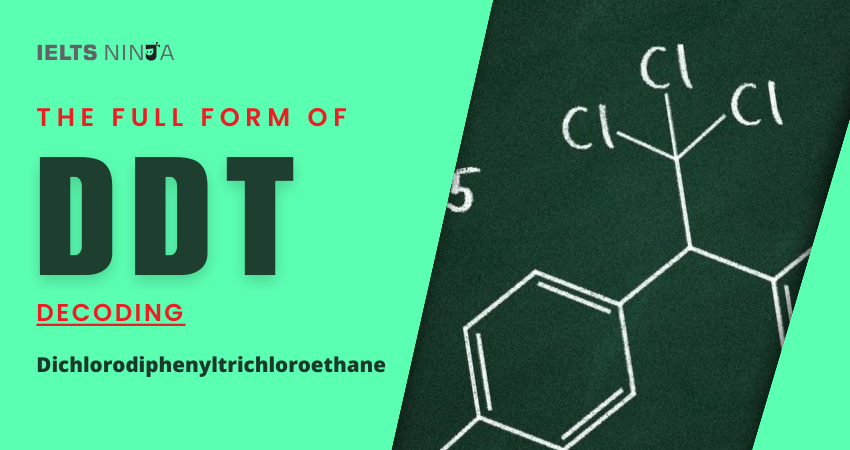In the realm of chemistry and environmental science, the full form of “DDT” stands for “Dichlorodiphenyltrichloroethane.” DDT is a synthetic chemical compound that gained notoriety for its use as an insecticide in the mid-20th century. While it was initially celebrated for its effectiveness in controlling disease-carrying insects, particularly malaria-carrying mosquitoes, DDT’s widespread use had significant environmental and health consequences. In this comprehensive guide, we will explore the details of DDT, its history, impact, and current status.
What is DDT?
Dichlorodiphenyltrichloroethane (DDT) is a synthetic organochlorine compound that was first synthesized in 1874. Its insecticidal properties were discovered in 1939, leading to its widespread use as an insecticide during World War II and in the years that followed. DDT is known for its remarkable persistence in the environment, which contributed to its ecological impact.
Key Aspects of DDT
DDTs History:
Discovery:
DDT’s insecticidal properties were discovered by Swiss chemist Paul Hermann Müller in 1939. For his discovery, Müller was awarded the Nobel Prize in Physiology or Medicine in 1948.
Widespread Use:
DDT became one of the most widely used insecticides, particularly during and after World War II. It played a crucial role in controlling insect vectors that transmitted diseases such as malaria, typhus, and yellow fever.
Ecological Impact:
DDT’s persistence in the environment and its bioaccumulation in the food chain raised concerns about its impact on wildlife and human health.
Environmental Impact by DDT:
Bioaccumulation:
DDT accumulates in the tissues of living organisms, with concentrations increasing as one moves up the food chain. This led to the phenomenon known as biomagnification.
Wildlife Decline:
DDT was linked to declines in the populations of various bird species, including the bald eagle, peregrine falcon, and brown pelican, due to thinning of their eggshells.
Environmental Persistence:
DDT can remain in the environment for years, posing long-term ecological risks.
Also Read: Best online IELTS coaching & training academy
Banning and Regulation on DDT:
Environmental Concerns:
Growing environmental concerns led to the banning or severe restrictions on the use of DDT in many countries, including the United States in 1972.
Stockholm Convention:
DDT is one of the persistent organic pollutants (POPs) regulated under the Stockholm Convention on Persistent Organic Pollutants, an international treaty aimed at protecting human health and the environment from POPs.
Legacy of DDT:
Despite its restrictions, DDT remains a topic of discussion in public health and environmental circles. Its history serves as a cautionary tale about the unintended consequences of widespread chemical use.
DDTs Alternatives:
The banning of DDT led to the development and use of alternative insecticides and approaches for vector control in public health programs.
Conclusion
DDT, or Dichlorodiphenyltrichloroethane, is a synthetic insecticide that gained notoriety for its significant environmental and health consequences. While it was once celebrated for its effectiveness in controlling disease vectors, its ecological impact, persistence in the environment, and bioaccumulation raised serious concerns. The banning and regulation of DDT in many countries marked a turning point in environmental awareness and the use of chemicals in agriculture and public health.








